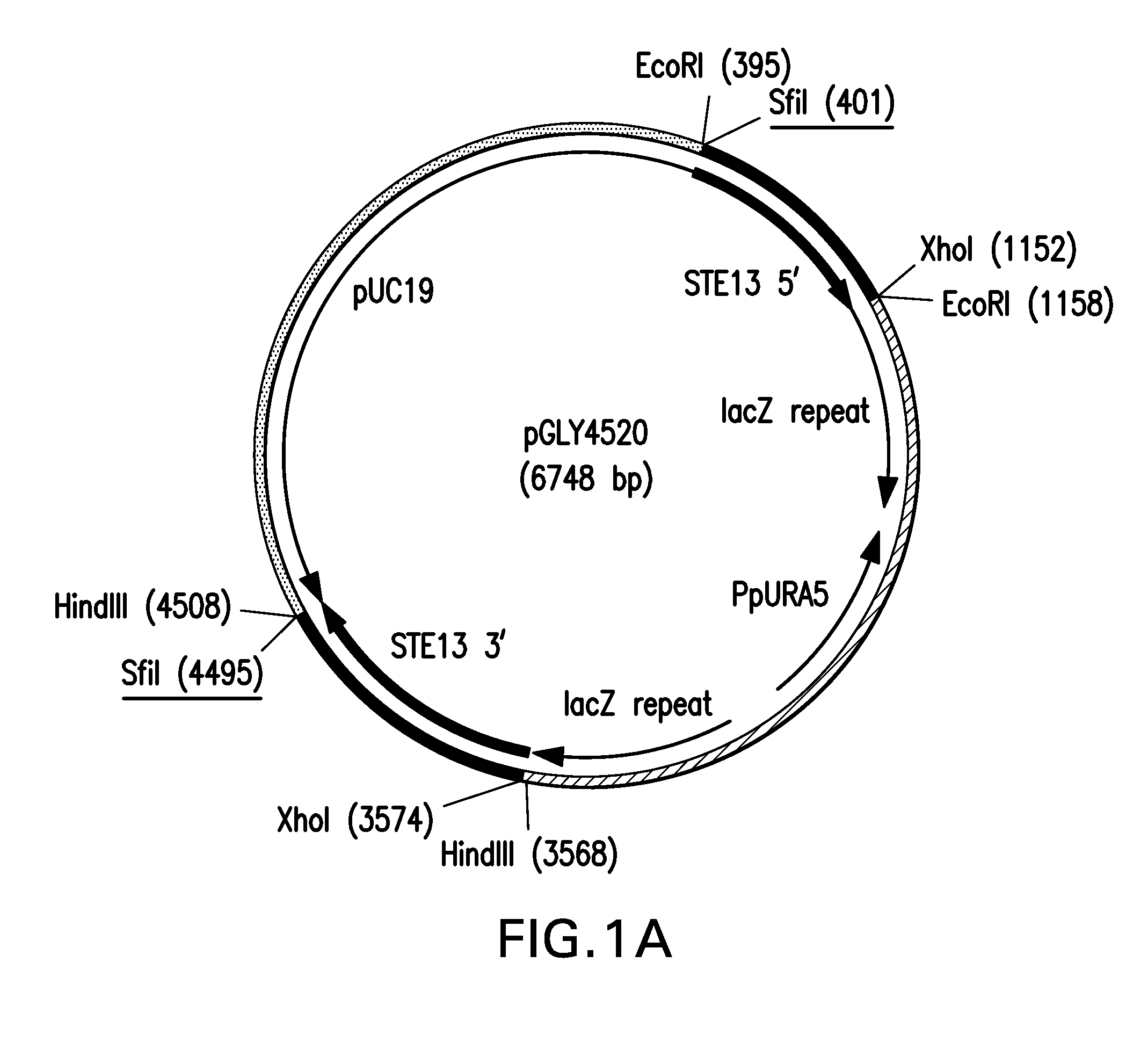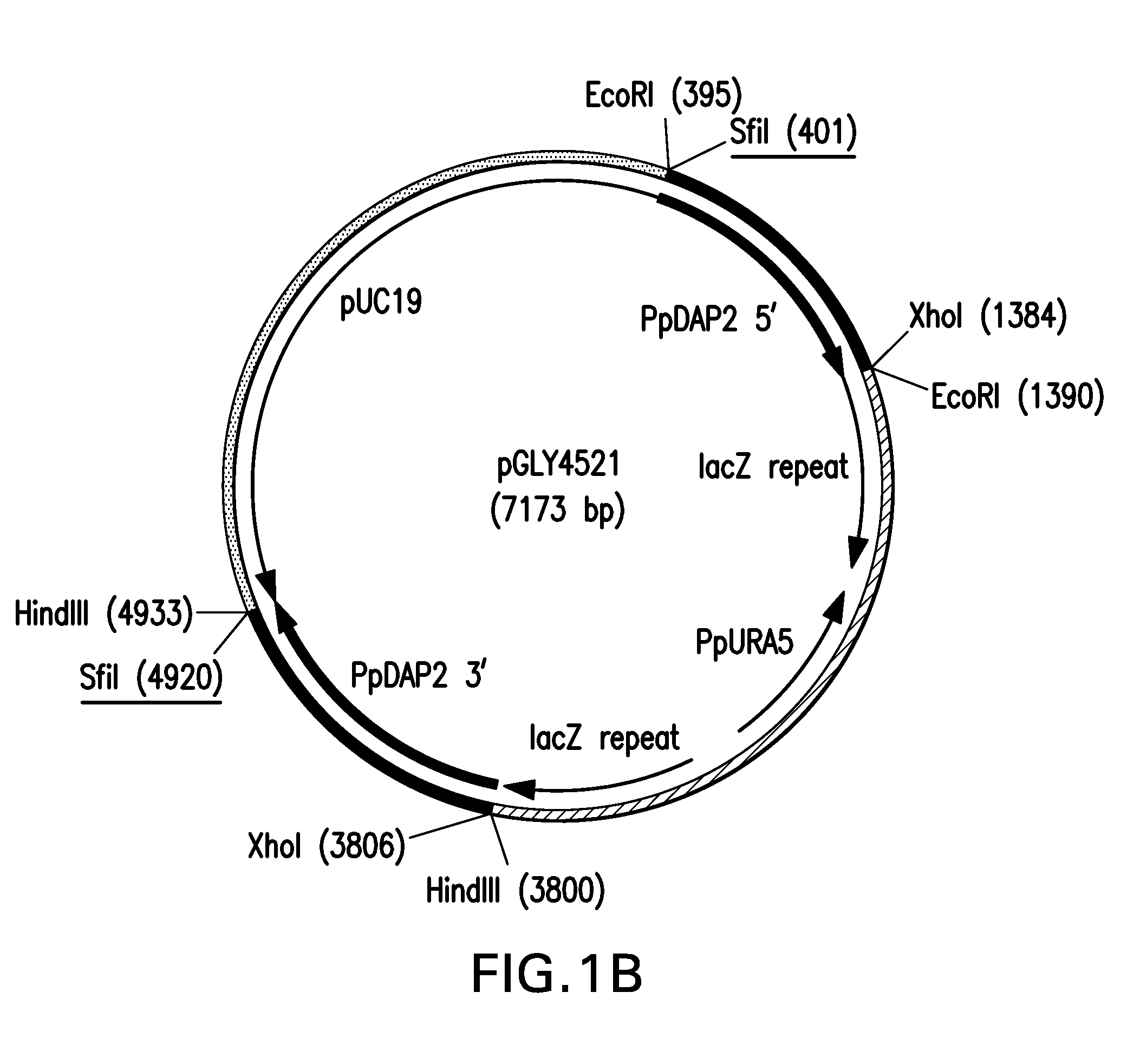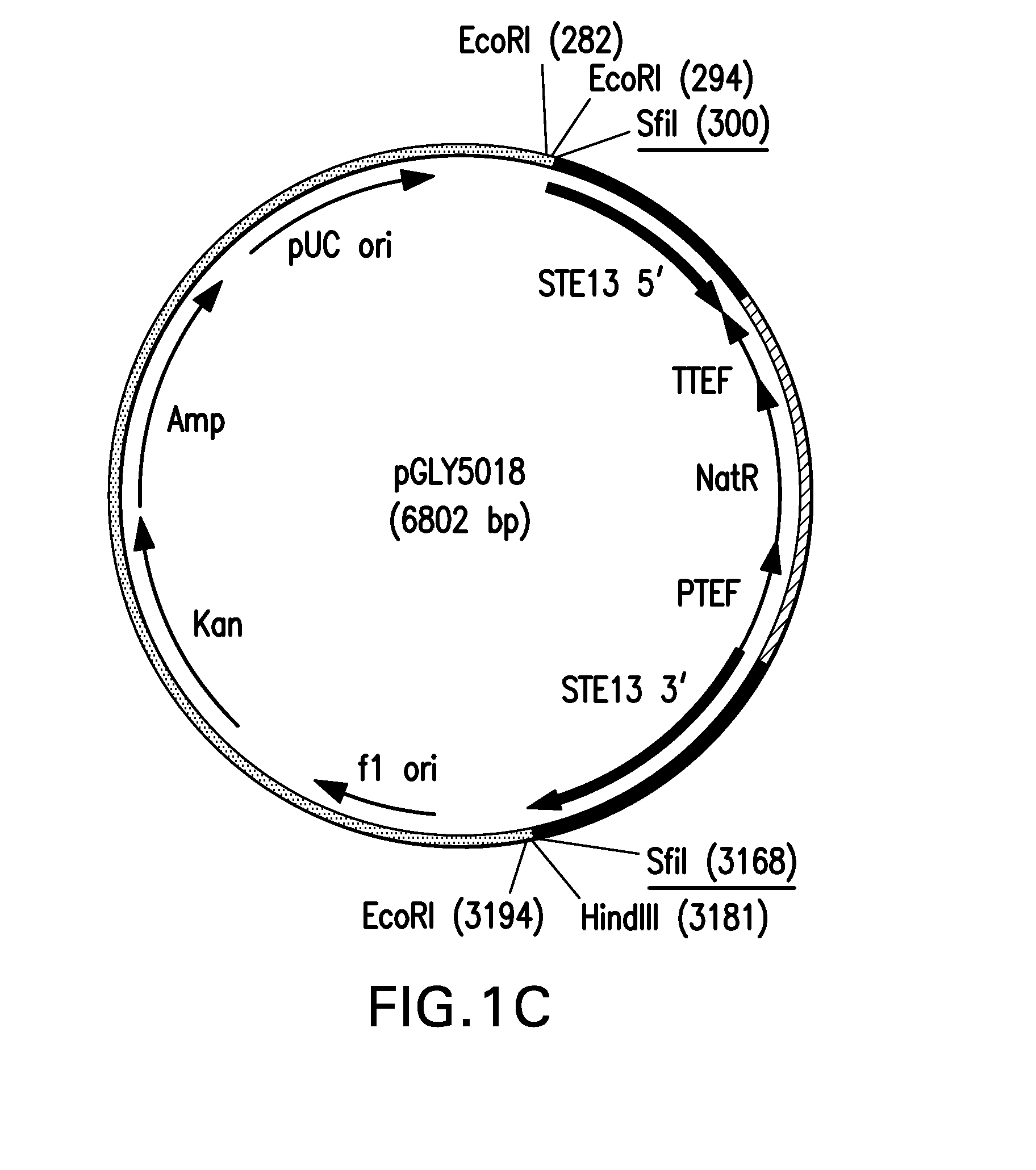Method for producing therapeutic proteins in pichia pastoris lacking dipeptidyl aminopeptidase activity
a technology of dipeptidase activity and therapeutic proteins, which is applied in the field of production of glycoproteins in yeast cell lines, can solve the problems of non-desirable proteolysis of some recombinant proteins, and achieve the effect of reducing the number of recombinant proteins
- Summary
- Abstract
- Description
- Claims
- Application Information
AI Technical Summary
Problems solved by technology
Method used
Image
Examples
example 1
Strains, Culture Conditions, and Reagents
[0095]Escherichia coli strains TOP10 (Invitrogen, Carlsbad, Calif.) or XL10-Gold (Stratagene, Santa Clara, Calif.) were used for recombinant DNA work. Restriction and modification enzymes were obtained from New England BioLabs, Ipswich, Mass., and used as directed by the manufacturer. Oligonucleotides were obtained from Integrated DNA Technologies, Coralville, Iowa. Salts and buffering agents were from Sigma, St. Louis, Mo. Minimal medium used herein comprised 1.4% yeast nitrogen base, 2% dextrose, 1.5% agar and 4×10−5% biotin and amino acids supplemented as appropriate. YMD rich media is 1% yeast extract, 2% martone, 2% dextrose, and 1.5% agar for plates. Nourseothricin is obtained from US Biologicals, Swampscott, Mass. (Catalogue number N5375-74) and is added to the YMD rich media to a final concentration of 100 μg / ml.
example 2
Generation of Knock-Out Vectors
[0096]A. Generation of step13::URA5 Knock-Out Vector
[0097]DNA fragments corresponding to 5′ and 3′ flanking regions of the STE13 open reading frame (SEQ ID NO: 41 and 42) were amplified using PfuUltra™ DNA polymerase (Stratagene, Santa Clara, Calif.) and genomic DNA from the Pichia pastoris strain NRRL-Y11430 as template. The primer pairs SH774 (SEQ ID NO: 13) and SH775 (SEQ ID NO: 14) and SH776 (SEQ ID NO: 15) and SH1777 (SEQ ID NO: 16), shown in Table 1, were used to amplify the 771 bp and 949 bp fragments for STE13 5′ and 3′, respectively. Following incubation with ExTaq™ (TaKaRa, Bio. Inc., Japan) for ten minutes at 72° C., the amplified fragments were cloned into pCR2.1 (Invitrogen, Carlsbad, Calif.) and transformed into TOP10 competent cells. DNA sequencing confirmed the STE13 5′ and STE13 3′ flanking regions were correct and the resultant vectors were designated pGLY4511 and pGLY4512, respectively.
[0098]A 763 bp STE13 5′ flanking region fragment...
example 3
Generation of STEI 3 and DAP2 Knockout Strains
[0102]Pichia pastoris auxotrophic glycoengineered cell line YGLY7406 [Δoch1, Δmnn4B, Δbmt2, Δura5, K. lactis and M. musculus UDP-GlcNAc transporters, M. musculus α-1,2-MnsI, H. sapiens β-1,2-GlcNAc transferase 1, R. norvegieus β-1,2-GlcNAc transferase II, D. melanogaster MnsII, S. pombe Gal epimerase, D. melanogaster UDP-Gal transporter and H sapiens β-1,4-galactosyltransferase] expressing GS5.0 glycans (See for example, Bobrowicz et al., Glycobiology, 14(9): 757-766, 2004; Hamilton et al., Science, 313 (5792): 14411-1443, 2006); U.S. Published Application No. 20060040353, was used as the starting strain for all manipulations. See FIG. 7 (A-C) for a flow diagram of how this and the subsequent strains were generated. GS5.0 strains can produce glycoproteins having bi-antennary afucosylated N-linked glycans terminating in β-1,4 galactose residues on the non-reducing ends of one or both termini (Bobrowicz et al., Glycobiology, 14(9): 757-766...
PUM
| Property | Measurement | Unit |
|---|---|---|
| concentration | aaaaa | aaaaa |
| pH | aaaaa | aaaaa |
| pH | aaaaa | aaaaa |
Abstract
Description
Claims
Application Information
 Login to View More
Login to View More - R&D
- Intellectual Property
- Life Sciences
- Materials
- Tech Scout
- Unparalleled Data Quality
- Higher Quality Content
- 60% Fewer Hallucinations
Browse by: Latest US Patents, China's latest patents, Technical Efficacy Thesaurus, Application Domain, Technology Topic, Popular Technical Reports.
© 2025 PatSnap. All rights reserved.Legal|Privacy policy|Modern Slavery Act Transparency Statement|Sitemap|About US| Contact US: help@patsnap.com



